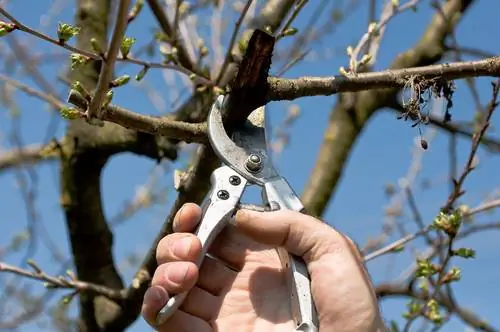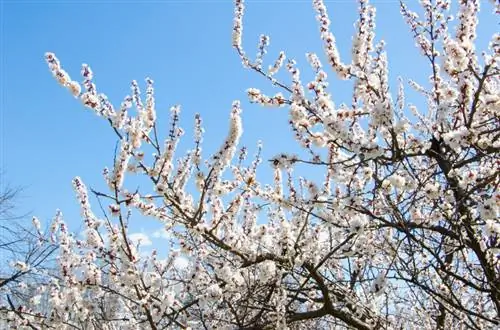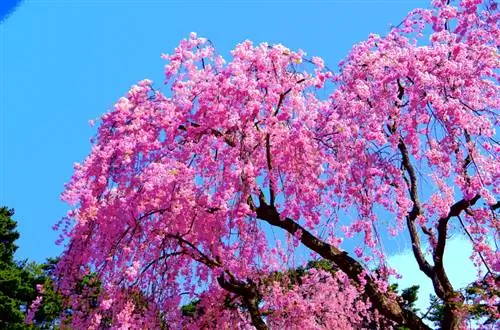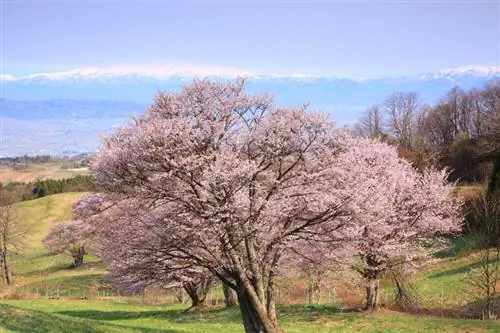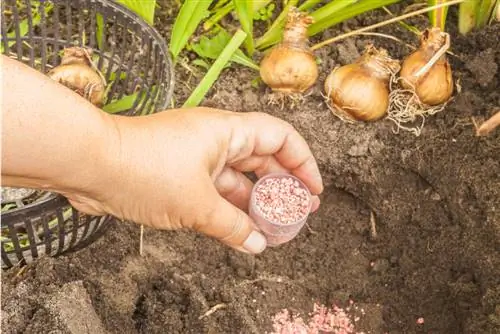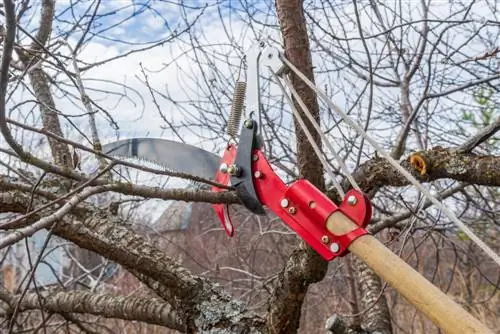- Author admin [email protected].
- Public 2023-12-16 16:46.
- Last modified 2025-01-23 11:21.
Japanese ornamental cherries are more sensitive to cutting than domestic cherry trees. From time to time it can still make sense to prune so that the flower fairytale repeats itself for many years. Read this guide to find out when and how to prune an ornamental cherry professionally.
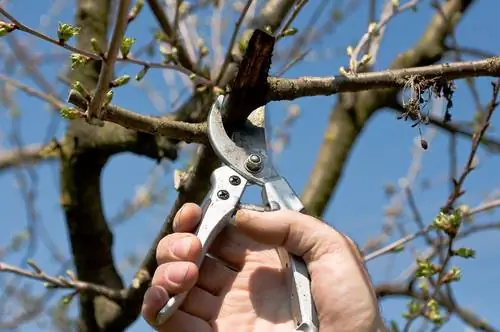
How and when should you cut an ornamental cherry?
An ornamental cherry should rarely be cut because it is sensitive to cuts. Thin out occasionally in spring, carry out moderate pruning after flowering and remove wild shoots immediately. Avoid cuts larger than 10 cm in diameter.
Cut ornamental cherries rarely
As a shrub or treetop, the ornamental cherry forms a stable framework with flowering wood that remains vital for many years. Its lavish flower clusters appear on one-year-old short shoots that sprout from two-year-old and older branches. In conjunction with a pronounced sensitivity to cutting, this growth results in a low need for cutting.
Think out occasionally in spring
So that an ornamental cherry can form its characteristic habit undisturbed, you should not carry out any pruning measures in the first five to six years. This applies regardless of whether you cultivate the flowering plant as a tree or a shrub. After the establishment years, check every year whether dead shoots are hindering or shading the valuable flowering wood. With a thinning cut you ensure light-flooded, flower-rich growth. How to proceed professionally:
- The best time is in early spring when temperatures are above freezing
- Thin out dead and unfavorably growing shoots
- Cut off dead wood on the branch in the ornamental cherry tree and remove it at ground level in the bush
Careful pruning is important so that a thinning cut does not destroy the characteristic growth habit of an ornamental cherry. After each cut, please take a few steps back to plan the next steps.
Moderate pruning after flowering
Over the years, an ornamental cherry tends to develop overly long, heavily drooping branches with dense whorls at the tips. Under this load, the treetop and bush seem to fall apart, which does not contribute to the well-maintained appearance. This behavior is the most common reason for a regular topiary. The best time is after the flowering period, before the buds are laid for the next year.
Short overhanging branches to the desired length by using the derivation cutting technique. To do this, look for a young shoot that is further in and points outwards. Where the young wood branches off, place the scissors.
On an older ornamental cherry, the buds at the tips of the shoots are sometimes close together and sprout like whorls. Slim down these shoots by cutting off the strongest side shoots.
Remove wild shoots immediately
The most magnificent ornamental cherries thrive as a graft on a robust wild base. As a result, wildlings emerge below the thickened grafting area. These shoots strive powerfully to overgrow the noble ornamental cherry in order to gain the upper hand in the race to the light. Please check the bush and treetop regularly for uncontrolled growth in order to remove the protruding shoots as quickly as possible.
Tip
When cutting an ornamental cherry, you should avoid cuts larger than 10 centimeters in diameter. In contrast to native trees, the Asian flowering beauty has difficulty forming wound wood. Wound areas that are too large are not completely covered by the callus, which invites diseases and pests.

